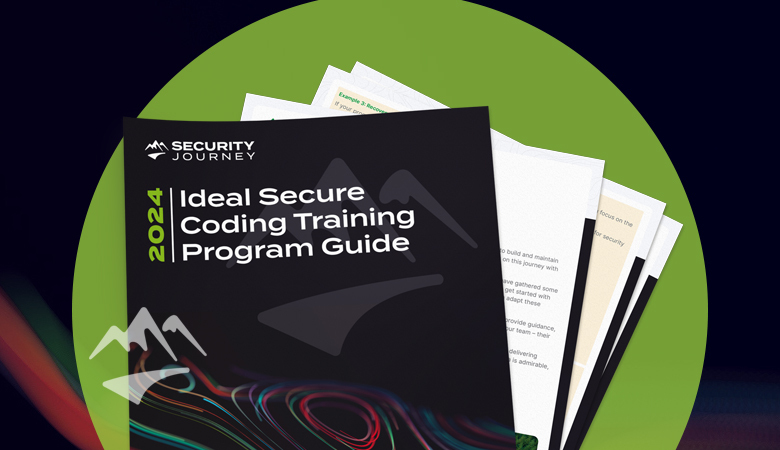Published on
Pittsburgh, PA – March 5, 2024 – Today, best-in-class application security education company, Security Journey, releases its Ideal Secure Coding Training Program Guide to support organizations in building out a long-term, sustainable approach to application security. The 14-page, 7 step Guide shares actionable best practices for planning, implementing, and maintaining an effective secure code training program, complete with guidance around gaining executive buy-in and utilizing gamification. The Guide also includes sample training plans, purpose-built to help admins ensure their program delivers quick impact on knowledge gain and proof of compliance and eases their workload.
Building more secure software has become a clear priority in recent years, with repeated governance from the White House, ONCD, Cybersecurity and Infrastructure Security Agency (CISA), and the Securities and Exchange Commission (SEC) on the need for “Security by Design.” And yet, speed-to-market pressures are overshadowing application security, leading to a record 28,829 new CVEs published in 2023. Without specific requirements and prescriptive regulations, organizations looking to educate their development teams on writing secure code have a broad scope of risks and programming languages to cover.
Discussing this new, free guidance, Security Education Evangelist, Amy Baker said “The Guide helps administrators either at the start of their secure code education journey or can help them optimize an existing program, walking them through the core pillars of a successful and measurable education program. In the face of compliance, speed-to-market pressures, changing security landscapes, and emerging technologies, it can be hard for program admins to even know where to start.”
Recent research from Security Journey highlighted that 47% of organizations blame their vulnerability remediation challenges on a lack of qualified personnel, making secure coding skills critical to application security success. Amy continues, “Secure coding training programs need to be directly relevant to everyone within the software development lifecycle, catering to learners at different levels and in different roles. This Program Guide is designed to make the commitment to a continuous training program pain-free so that organizations can quickly improve skills and foster a culture of security awareness.”
Topics covered in the Guide include:
- Planning your program
- Pulling baseline data
- Prioritizing internal communications
- Selecting your training paths (complete with sample plans)
- Incorporating tournaments
- Building security champions
- Measuring results
Use this link to access a 2-page version of the Ideal Secure Coding Training Program Guide.
To learn more about secure coding education and enhance your organization's security posture, please visit securityjourney.com.


